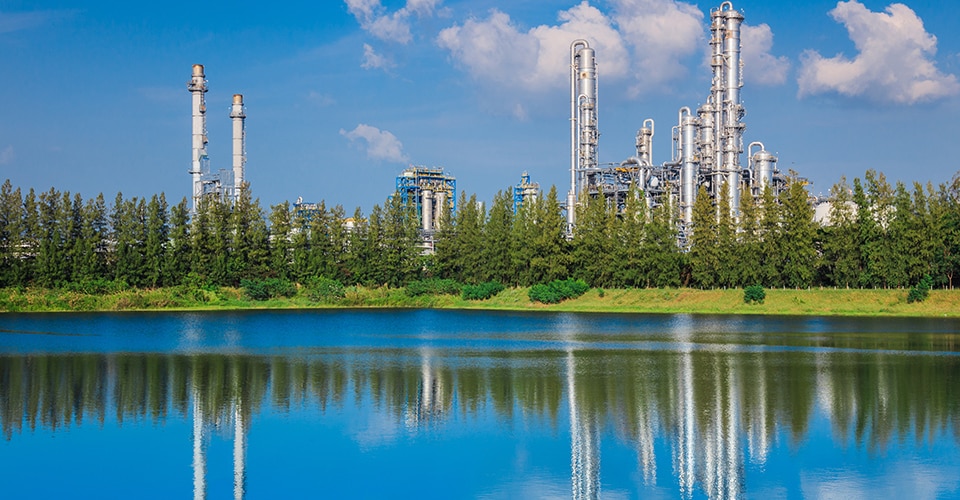
Three ways we are taking climate action for long-term impact
By investing in our manufacturing operations, innovating with our customers, and collaborating across the value chain, we can help move the needle on decarbonization in our industry and contribute to a more sustainable future for everyone.
Transitioning to a low-carbon economy requires us all to move beyond business as usual. But for many businesses, the challenge is answering: How do you translate climate commitments into actions that contribute to a cleaner, more resilient world?
At Climate Week NYC, senior leaders from business, government and civil society gather to discuss how to accelerate decarbonization. Especially in hard-to-abate industries, businesses are looking for practical, scalable solutions that contribute to economy-wide decarbonization and create a path to growth.
At Dow, we believe we can decarbonize and create business value at the same time. We embrace our responsibility to help protect the climate by reducing global greenhouse gas (GHG) emissions while also supporting healthy watersheds and ecosystems. To help us reach these targets, we are taking climate action through investments, innovation and collaboration.

Our decarbonization roadmap includes investing in scalable, innovative technologies and processes that will reduce GHG emissions from our operations, increase production and contribute to decarbonizing our industry.
At our Fort Saskatchewan manufacturing site in Alberta, Canada, we are building the world’s first net-zero-emissions integrated ethylene cracker and derivatives site with respect to Scope 1 and 2 GHG emissions. The project will use emissions-reducing technology such as clean, circular hydrogen and carbon capture and storage to decarbonize approximately 20% of our global ethylene capacity while increasing our polyethylene capacity by 2 million metric tons annually.
This Path2Zero project is part of our plan to decarbonize our manufacturing facilities while growing capacity and delivering products with lower carbon footprints to meet customer demand. Already, we have reduced GHG emissions by 15% between 2005-2020. Today, our actions, including this Fort Saskatchewan investment, have us on track to reduce our net annual scopes 1 and 2 emissions an additional 5 million metric tons annually (~15%) by 2030 from our 2020 baseline.

As a leading materials science company, we’re helping our customers reduce GHG emissions and promote sustainable development by innovating products that enable energy efficiency, lightweighting, circularity, renewable energy, e-mobility, recycling technology and longer product-use lives.
In fact, more than 89% of our R&D innovation pipeline is aligned to sustainability benefits.
For example, in cities, our high-performing sealants for building façades are enabling designs with less embodied carbon. On the road, we are contributing to the transition to electric vehicles with materials that optimize battery performance or reduce vehicle weight. To help support reliable communications, we have a wide range of solutions that improve energy efficiency in data centers. For our home lives, we have developed surfactants made using recycled carbon for laundry detergents; bio-based and biodegradable ingredients for personal care products; and new circular business models that use recycled mattresses to produce new polyurethane bedding and furniture. We also are working with multiple stakeholders to design circular plastic packaging that extends shelf life and addresses food waste.

The chemical industry currently converts raw materials into over 70,000 different products. It is incredibly diverse and interconnected, and changes in feedstocks and upstream materials can have a ripple effect across the value chain.
That is why working across our value chain -- with brand owners, customers and suppliers -- is essential to offering products made with less GHG emissions. We are engaging customers and suppliers to identify opportunities where, by working together, we can both create value through decarbonization efforts and offer consumers products with improved sustainability and performance.
This work includes using existing industry standards to ensure the value from decarbonization spreads across the value chain, and to track emissions reductions that are verifiable, auditable and traceable. Our participation in the CDP Supply Chain Program is helping us track climate impacts in the supply chain and identify collaborative decarbonization opportunities with suppliers.
The transition to a low-carbon economy is a game-changer. We know that we can’t grow without decarbonizing, and we can’t decarbonize without growing. By investing in our manufacturing operations, innovating with our customers, and collaborating across the value chain, we can help move the needle on decarbonization in our industry and contribute to a more sustainable future for everyone.
Andre Argenton, Chief Sustainability Officer, Vice President of Environment, Health and Safety (EH&S)
About the author

Andre Argenton is Dow’s chief sustainability officer and vice president of Environment, Health and Safety (EH&S). He is responsible for corporate EH&S governance and sustainability. Throughout his career, he has worked across the spectrum of chemistries and technologies at Dow—supporting a broad range of industries and covering all facets of innovation, from new product development to process research and customer-facing application development. Andre has served on several academic advisory boards for chemical engineering and chemistry, including the University of Michigan Department of Chemical Engineering, Liquid Sunlight Alliance, University of Michigan Erb Institute and the NYSE Sustainability Advisory Council. He holds a Ph.D. in physical chemistry from the University of São Paulo in Brazil.





